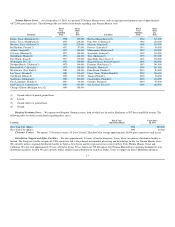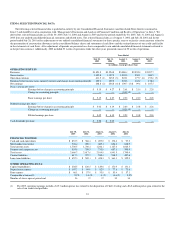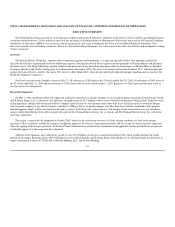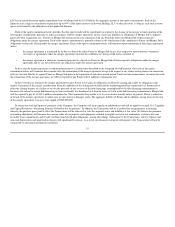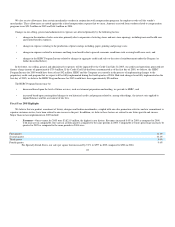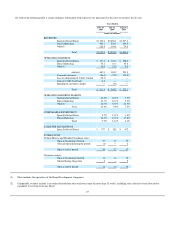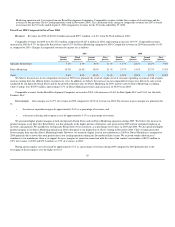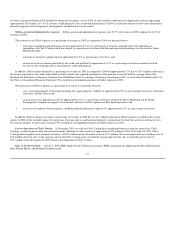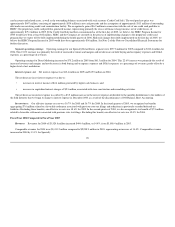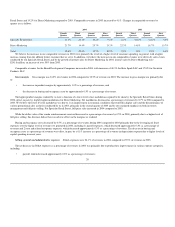Neiman Marcus 2004 Annual Report Download - page 23
Download and view the complete annual report
Please find page 23 of the 2004 Neiman Marcus annual report below. You can navigate through the pages in the report by either clicking on the pages listed below, or by using the keyword search tool below to find specific information within the annual report.
Factors Affecting Our Results
Revenues. We generate our revenues primarily from the sale of high-end merchandise through our Specialty Retail Stores and Direct Marketing
operation. Components of our revenues include:
Sale of merchandise—Revenues from our Specialty Retail Stores are recognized at the later of the point of sale or the delivery of goods to the
customer. Revenues from our Direct Marketing operation are recognized when the merchandise is delivered to the customer. We maintain
reserves for anticipated sales returns primarily based on our historical trends related to returns by both our retail and direct marketing customers.
Commissions from leased departments—A small portion of the sales of our Specialty Retail Stores consist of commissions from certain
departments in our stores that we lease to independent companies.
Delivery and processing—We generate revenues from delivery and processing charges related to merchandise delivered to our customers from
our retail and direct marketing operations.
Our revenues can be affected by the following factors:
changes in the level of consumer spending generally and, specifically, on luxury goods;
changes in the level of full-price sales;
changes in the level of promotional events conducted by our Specialty Retail Stores;
our ability to successfully implement our store expansion and remodeling strategies;
the rate of growth in internet sales by our Direct Marketing operation; and
general economic conditions.
In addition, our revenues are seasonal. For a description of the seasonality of our business, see "—Seasonality."
Gross margin. Our gross margin represents our revenues less the costs of the following components:
Inventory costs—We utilize the retail method of accounting, which is widely used in the retail industry due to its practicality, for substantially all
of our merchandise inventories. Merchandise inventories are stated at the lower of cost or market. Under the retail inventory method, the
valuation of inventories at cost and the resulting gross margins are determined by applying a calculated cost-to-retail ratio, for various groupings
of similar items, to the retail value of inventories. The cost of the inventory reflected on the consolidated balance sheet is decreased by charges to
cost of goods sold at the time the retail value of the inventory is lowered through the use of markdowns. Hence, earnings are negatively impacted
when merchandise is marked down.
Buying costs—Buying costs consist primarily of salaries and expenses incurred by our merchandising and buying operations.
Occupancy costs—Occupancy costs consist primarily of rent, depreciation, property taxes and operating costs of our retail, distribution and
support facilities. A significant portion of our buying and occupancy costs are fixed.
Delivery and processing costs—Delivery and processing costs consist primarily of delivery charges we pay to third-party carriers and other costs
related to the fulfillment of customer orders not delivered at the point-of-sale.
20
•
•
•
•
•
•
•
•
•
•
•
•
•





